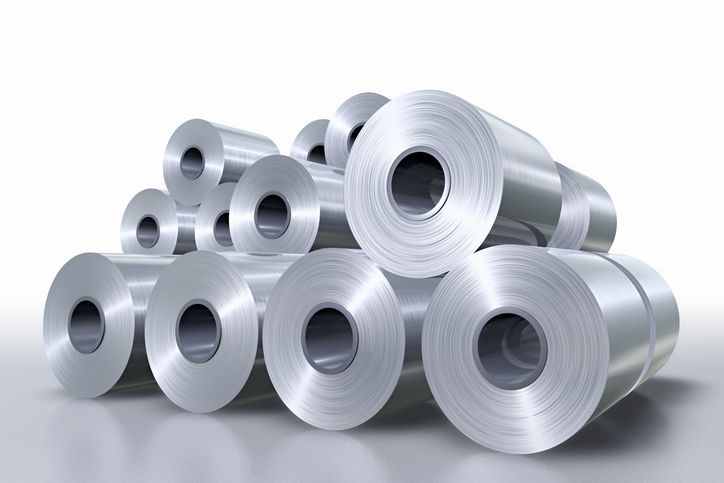The steel industry stands as the backbone of India’s infrastructure and manufacturing growth, playing a pivotal role in the nation’s economic progress. Steel production and consumption are key indicators of a country’s economic development, serving as both a raw material and an intermediary product essential for industrial advancement. It is no exaggeration to say that the steel sector has always been at the forefront of industrial progress, forming the foundation of any robust economy. Under Prime Minister Narendra Modi’s leadership, the emphasis on infrastructure, manufacturing, MSMEs, and sustainability has significantly boosted steel demand. Government initiatives, such as the National Steel Policy 2017, aim to enhance production capacity and consumption to meet rising needs, aligning with the vision of Aatmanirbhar Bharat.
India produced approximately 140 million tonnes of crude steel in 2023, contributing about 7 per cent to global output, as per the World Steel Association. This figure rose to 143 million tonnes in the financial year 2023-24, reflecting steady growth. With demand projected to increase further due to infrastructure and industrial expansion, concerns over energy consumption and carbon emissions highlight the need for sustainable practices.
To promote local production, the government introduced the Domestically Manufactured Iron & Steel Products (DMI&SP) Policy, prioritizing Indian-made steel for public procurement to reduce import dependency. The Production Linked Incentive (PLI) Scheme for Specialty Steel, launched in July 2021, encourages domestic manufacturing of high-grade steel. It has attracted 44 projects from 26 companies, with investments of Rs 27,106 crore, expected to add 24 million tonnes of downstream capacity and create 14,760 direct jobs. These measures aim to bolster self-reliance and enhance capabilities in specialized steel for sectors like automotive and defence.
The Union Budget 2024-25 allocated a record Rs 11.11 lakh crore for infrastructure, driving steel consumption through projects in highways, ports, and urban development. This substantial investment strengthens supply chains and supports economic growth, positioning India as a competitive player globally.
Notably, the 6th ISA Steel Conclave 2025, held in New Delhi on September 8-9, underlined these goals with the theme “Steel for Aatmanirbhar Bharat: Driving Sustainability and Growth.” Organized by the Indian Steel Association, the two-day event brought together industry leaders and policymakers to discuss artificial intelligence in the steel value chain, financing for green transitions, and raw material security. AI’s potential to optimize mining, manufacturing, logistics, and distribution was highlighted, promising cost savings and eco-friendly practices through data analytics and automation.
Naveen Jindal, President of the Indian Steel Association and Chairman of Jindal Steel Ltd, emphasized reducing reliance on imported coking coal through alternative raw materials and innovative technologies. He advocated for empowering MSMEs with better access to finance and skills, promoting resilience and inclusive growth across the sector.
Union Minister Piyush Goyal, addressing the conclave’s closing, commended the industry’s consistent dialogue and focus on sustainability and innovation. He urged surpassing ambitious targets, aiming for 500-700 kg per capita steel consumption by 2047, compared to the current 98 kg, to support a developed India. Goyal highlighted opportunities in prefabricated steel structures and shipbuilding, which could generate 10-15 million jobs, and noted government investments of USD 125-150 billion annually in infrastructure, alongside free trade agreement negotiations to secure raw materials and counter carbon border adjustments.
Minister of State for Heavy Industries and Steel, Bhupathiraju Srinivasa Varma, reiterated the sector’s role in achieving Aatmanirbhar Bharat. He linked initiatives like the National Infrastructure Pipeline and Make in India to rising steel demand, with priorities including decarbonization, green steel adoption, technology integration, and raw material security to ensure long-term competitiveness.
The conclave discussions aligned global trends with India’s policies, emphasizing technology-driven manufacturing and sustainable growth. The focus was on building a resilient industry through innovation and inclusive strategies.
Looking forward, the steel sector faces challenges like raw material costs and the shift to cleaner energy. The National Steel Policy targets 300 million tonnes of capacity by 2030, with per capita consumption reaching 160 kg. By 2047, production could reach 500 million tonnes, with demand nearing 480 million tonnes, driven by infrastructure and manufacturing growth. PM Modi’s focus on MSMEs, a significant steel consumer base, further strengthens this trajectory. With effective policies and investments, the sector can drive employment, reduce imports, and support sustainable development.
In essence, India’s steel industry is a cornerstone of economic progress, connecting traditional strengths with modern ambitions. As the nation aims for a USD 5 trillion economy, steel will remain central, supporting self-reliance and global competitiveness. Prime Minister Modi’s vision to steel the framework of the industry for Aatmanirbhar Bharat emphasizes infrastructure growth, MSME empowerment, and sustainable practices, ensuring the sector drives job creation and innovation. The recent conclave reflects a collective commitment to these goals, paving the way for a stronger, greener future.











